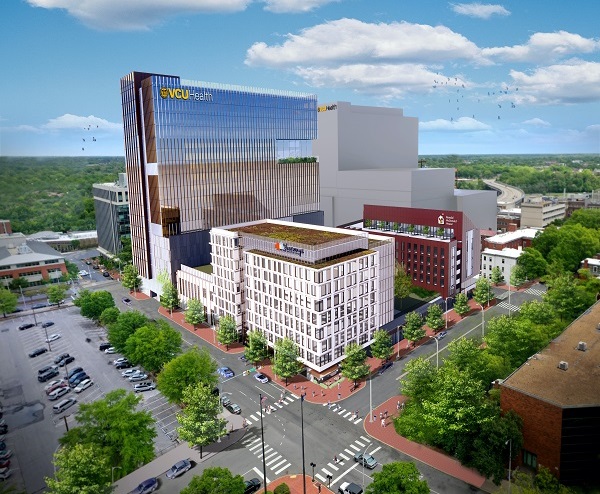
A rendering of the 17-story version of the project to replace the Public Safety Building. (BizSense file)
Editor’s note: This is the third installment in a series analyzing the failed VCU Health-anchored development in downtown Richmond.
In the days after Art Kellermann relented and agreed to sign off on a costly downtown development deal he’d adamantly opposed, the then-VCU Health CEO’s colleagues who’d urged him to OK the project shared, over email, a collective sigh of relief.
In a message to Karol Gray, a high-level administrator with Virginia Commonwealth University who helped secure Kellermann’s compliance, fellow administrator Jay Bonfili said: “I met with Art this morning. I do not sense that (the project) will continue to be problematic.”
“Thank goodness,” replied Matt Conrad, vice president for government and external relations for VCU and VCU Health, when Gray shared Bonfili’s email minutes later. “So grateful for your engagement.”
Gray and Conrad had lobbied Kellermann on behalf of VCU President Michael Rao, who also is president of the health system and chairs its Board of Directors. Kellermann’s signature meant a seeming end to months of internal consternation over VCU Health anchoring the $325 million redevelopment of the city’s old Public Safety Building at 500 N. 10th St. downtown.
Kellermann had repeatedly urged senior leadership to reconsider the multi-building office project – referred to by administrators as “the Clay Street project” – which he and others warned could end up proving pricier than expected and become an unnecessary expense for a health system that had been strained by the pandemic.
The deal’s consummation on July 15, 2021 committed VCU Health to $617 million in rent over 25 years, real estate tax payments to the city that would continue in perpetuity, and any cost overruns for a project that was widely viewed as destined to go over budget.
Then, just three months later, almost as soon as Kellermann’s signature had time to dry, it became clear any relief about the project wouldn’t last long, as developer Capital City Partners informed the health system that the original project couldn’t be built.
‘Budget as presented will not work’
Emails obtained by Richmond BizSense through Freedom of Information Act requests show that, by October 2021, CCP and VCU Health were discussing the fact that the 545,000-square-foot complex, including a high-rise tower with 150,000 square feet of office space for the health system, was no longer financially feasible according to its original plans and budget.
CCP principals Susan Eastridge and Michael Hallmark relayed that soil conditions and other challenges with the site were driving up costs, as were increases in construction costs fueled by the pandemic and inflation. Remote work that came with COVID had also lessened demand for office space, both for the health system and for additional spec space that was to be included in the project.
The site challenges would mean that parking would need to be completely above-ground, eating into the available space for other uses in a structure that had little wiggle-room for adjustments. Also on the table was a reduction of the amount of street-facing retail that was one of few revenue-generators in the project for VCU Health, which had signed on to be the master tenant through a credit-tenant lease.
As a solution, CCP suggested a change from office to research space, which, while more expensive to build, they maintained would fit better with the city’s vision for that part of downtown as a so-called innovation district. The change would also require a drop in the height of the high-rise and a 50 percent reduction in the number of parking spaces, 200 of which were to be for city use.
At the same time the challenges were being shared, a new member of the project team for VCU Health had been added with the hiring of Brian Jenkins, a 25-year real estate industry vet who started that same month as the health system’s chief real estate officer.
It wasn’t long, a few weeks in fact, before Jenkins saw the writing on the wall.
“Safe to say that losing 400 parking spots is not viable for (VCU Health),” Jenkins told Hallmark. “We should discuss soon how CCP best gets a concession from City for their 200 spots.”
Later, Jenkins added: “Budget as presented will not work.”
‘The city will definitely be watching’

City Hall looms over the Public Safety Building site at Leigh and 10th streets. (BizSense file photo)
Eastridge had previously told administrators that challenges affecting the project ranged from the scope of asbestos abatement needed before the Public Safety Building could be demolished, to site and soil issues involving the new building’s foundation.
But above all, Eastridge said, the challenges were primarily “in the jaw-dropping price increases in material costs we are now seeing world-wide as the economy is restarting and supply logistics are slow to catch up.”
“The end result of all of this was that our project was trending to be unsustainably over-budget,” Eastridge told Deborah Davis, VCU Health’s chief of strategic initiatives. “We needed the past month to fully evaluate all of these issues before bringing them to you.”
“I have to say,” Davis replied, “that we were surprised by a good deal of the information that you referenced below. We believe our time would be best used by setting up a meeting late next week when you are prepared to fully brief us.”
Those briefings would now involve Jenkins, whose arrival prompted a request for an introduction from Conrad, the government relations VP, who said he wanted to stay in touch with Jenkins as the development progressed.
“The city will definitely be watching it as we go into deliberations over the baseball project and surrounding acres,” Conrad told Davis, referring to coordination of the city’s Diamond District project with the planned VCU Athletics Village.
In lobbying Kellermann months earlier, Conrad had argued that backing out of the Clay Street project would have “disastrous effects” on those other efforts and VCU’s relationships with the city, referring specifically to Mayor Levar Stoney and alleging that his administration “will box us out if we blow up the current deal…”
In a statement to BizSense last week, Stoney said he didn’t know what Conrad meant by his remarks or why he invoked his name in his emails with Kellermann.
“As Mayor my name is invoked in circles and corners across the city, many times to fallacies and innuendo – like this,” Stoney said. “I don’t know the internal workings of Mr. Conrad or VCU and how they conduct their business.”
The emails show little to no involvement from city administrators as CCP and VCU Health discussed changes to the project – a point of contention that the city would bring up later.
‘We can fight, or…”
As they hashed out the changes, Eastridge maintained that the switch from office to research space would be better for both VCU Health and the city.
In a Nov. 5, 2021, email to Jenkins, Eastridge wrote: “We think the City would accept this type of modification of approach due to their current pivot to an Innovation District for our redevelopment area.” Contending that the city would still get the real estate tax payments laid out in their agreements, Eastridge said the city “would likely agree that the assessment for life science/lab space would be higher than administrative office use.”
The assessed value was a talking point because of the project’s goal of keeping the site tax-generating for the city, as VCU- and VCU Health-owned properties are typically exempt from local taxes.
That goal was to be achieved by having an affiliate of Oak Street Real Estate Capital, the Chicago-based firm that was providing capital for the project, purchase the project site from the city and effectively be VCU Health’s landlord.
But on Jan. 5, 2022, Jenkins wrote CCP expressing concerns that research space would not be achievable on the site based on cost estimates to build the rest of the complex, including the structured parking. He said at least $150 million would be needed to build even a scaled-down tower with research space – just under half the project’s overall budget.
The group was constrained by the agreed-upon budget, as any increases to it would require approval from state money committees and re-approvals from Richmond City Council.
“We need to remove all excess out of this project,” Jenkins told CCP. “We continue to strive to be good partners, but CCP must recognize the difficult spot VCUHS faces in light of our collective realities.”
The next day, Jenkins replied to an email that Conrad had sent to the health system’s general counsel requesting to meet about the Clay Street project.
Conrad’s email, which was marked as time-sensitive and subject to attorney-client privilege, was copied to VCU President Rao, VCU Health CEO Kellermann, VCU CFO Gray and others including Jenkins. Its contents were redacted by VCU Health under a FOIA exemption relating to CEO and president correspondence.
Whatever was said in the email apparently caused a stir.
In his unredacted response, Jenkins told Conrad: “The frenzy this memo is causing is kind of extraordinary. I think with some explanation VCU will be comfortable that VCUHS is protecting VCUHS and ONE VCU’s interests and acting in a reasonable manner,” referring to the One VCU Master Plan for the university and the health system.
“It is worth keeping in mind,” Jenkins added, “that VCUHS is reacting to developer non-performance, not causing it.”
In a Jan. 12 email, Jenkins told CCP he was unsatisfied with proposed changes for part of the project, contending that planned retail space could be sacrificed if needed, and that “fighting to add parking” that would add to the cost would not be warranted with the research approach.
“I remain concerned about CCP’s development solution for this project,” Jenkins said.
“I acknowledge CCP and ONE VCU, and the City, has a lot riding on this deal, and it is critical that CCP and VCUHS stick the landing on a complex and significant pivot required for this project,” he said. “We can fight, or we can decide we both have something to add and find a winning solution.”
‘We have significant concerns’
Nonetheless, CCP would ultimately file plans with the city for a scaled-down version of the project that dropped the building height from 17 stories to seven, involved research space instead of office space and showed only half the 1,200 structured parking spaces originally planned.
When the changed plan reached city officials in February 2022, Leonard Sledge, the city’s economic development director, expressed his and Chief Administrative Officer Lincoln Saunders’ concerns in an email to Eastridge, Hallmark and Conrad.
“We have significant concerns about the requested changes and desire to talk with you (the development team) and VCU Health (the tenant) about the request,” Sledge wrote.
In preparing a response, Hallmark leaned on Jenkins to help in the pitch of a building with research space instead of office space as fitting better with the city’s vision for that part of downtown as an innovation district.
“Starting an innovation district with research programs that are supported by an institution like VCUHS is a gift to the City’s urban economic development, and that is where their innovation district thinking needs to begin,” Hallmark wrote.
When the scaled-down project was formally filed with the city in March 2022, the reworked plan made no mention of VCU Health, and the health system’s logo was not visible on the building as it had been in previous renderings.
At the time, BizSense asked the health system to comment as to whether it was still involved in the project. The request prompted a statement from a VCU Health spokesperson, who said the health system’s “commitment to be part of the redevelopment project is steadfast.”
After BizSense’s report about the scaled-down plan published the next day, the FOIA emails show, Shirley Gibson, a VCU Health vice president, sent Jenkins a link to the article in an email with the subject line: “Just read Bizsense.”
Below the link, Gibson wrote: “Wait till they really hear the deal.”
“Or no deal,” Jenkins replied.
A few days later, in an email to Jenkins, Eastridge expressed optimism about how city officials would receive the project change, describing CCP’s conversations with the city as “a congenial back and forth.”
“The main thing to convey here is that we feel the City support for the project is there, and with whatever modifications you may want to make with the project’s ultimate scope, there will be support,” Eastridge said.
Three weeks later, on April 7, that theory would prove wrong, with the city issuing a default notice that stated the new scaled-down plan “in no way constitutes a (plan of development) application for the project as it relates to the development agreement,” and that CCP had not informed the city, as their agreement required, of any issues facing the project until February 2022, three months after it had alerted VCU Health.
Eastridge would reply that she and Hallmark were “disheartened” to receive the default notice, maintaining that they had been discussing with city officials since January how to go about amending the agreement, in light of unforeseen site challenges and the office market changes.
Meetings between the parties would be held through the summer to, as Sledge put it in one email, “…discuss the path forward to redevelop the Public Safety Building site.” But within a week of the default notice, according to the emails BizSense obtained, the prospect of VCU Health pulling out of the project entirely was already being discussed.
‘He wants it on the table’
In an April 13, 2022, email, VCU Health CFO James Siegel told Jenkins he had heard “some late breaking intel on Clay Street that translates into about ($70 million) in buyout.” He was referring to the early steps of a process called defeasance, which ended up requiring a $73 million payment from the health system to back out of the deal.
Jenkins replied that he’d asked Kellermann, the VCU Health CEO, for “a gut reaction to the concept” of defeasance, later adding: “He wants it on the table.”
The next mention of defeasance in the obtained emails comes seven months later, in late November 2022, in a message from Jenkins to representatives with Blue Owl Capital, the New York-based investment firm that had acquired Oak Street a month earlier, and with Mesirow Financial, which was the financing group’s bond placement firm.
Defeasance discussions by that point had reached a negotiating stage, as Jenkins’ email presents a counter offer for the exit payment amount, which he said would be presented, if the parties all agreed, to VCU Health’s Board of Directors in early December.
He said the counteroffer was based on terms that were acceptable to VCU Health leadership, which by that time no longer included Kellermann, who resigned as CEO weeks earlier at Rao’s request. An announcement from VCU at the time did not specify a reason for the leadership change.
Emails show that the defeasance payment offer was at one point as high as $142 million. Fluctuating interest rates would dictate the final payment amount, which came out to $72.9 million by the time the process was completed in February of this year. That coincided with the city taking back – for zero dollars – the 3-acre property it had sold to the Oak Street group for $3.5 million.
It isn’t clear from the emails what ultimately prompted VCU Health’s Board of Directors to pursue defeasance and pull out of the deal when it did, after months of work to rework the project. Meeting minutes that might show when and why the board took such action are not posted online beyond May 2022. A request for minutes since that time was not fulfilled by VCU Health in time for this story.
The health system has since said publicly it decided to exit the project in light of challenges arising over the course of the pandemic and the financial obligations that came with the deal.
The prospect of litigation appears to have been a consideration, according to language in the Feb. 1, 2023, defeasance agreement between VCU Health, lender UMB Bank and Project 10th Street Owner LLC, the ownership entity that included Oak Street/Blue Owl that was set up to be VCU Health’s landlord in the project.
The defeasance document states that VCU Health had asserted, in addition to site conditions and other factors making the project impossible within its original budget, “various other claims and/or potential claims against Landlord and Developer, including, but not limited to, potential claims relating to the financing of the Project and the proceeds that Landlord received from the Loan.”
The document continues: “However, to avoid potential harm to the Certificateholders and thereby protect VCUHS’ access to the debt markets and to avoid the burden, expense, and distraction of potential litigation, VCUHS desires to contribute funds towards the defeasance of the Loan and perform its other covenants hereunder subject to the terms and conditions of this Agreement.”
It isn’t clear from the defeasance agreement why that loan, which totaled $425 million, was roughly $100 million more than the project’s $325 million projected cost. Questions remain as to what came of, or was done with, that difference as a result of the defeasance.

A rendering of the 17-story version of the project to replace the Public Safety Building. (BizSense file)
Editor’s note: This is the third installment in a series analyzing the failed VCU Health-anchored development in downtown Richmond.
In the days after Art Kellermann relented and agreed to sign off on a costly downtown development deal he’d adamantly opposed, the then-VCU Health CEO’s colleagues who’d urged him to OK the project shared, over email, a collective sigh of relief.
In a message to Karol Gray, a high-level administrator with Virginia Commonwealth University who helped secure Kellermann’s compliance, fellow administrator Jay Bonfili said: “I met with Art this morning. I do not sense that (the project) will continue to be problematic.”
“Thank goodness,” replied Matt Conrad, vice president for government and external relations for VCU and VCU Health, when Gray shared Bonfili’s email minutes later. “So grateful for your engagement.”
Gray and Conrad had lobbied Kellermann on behalf of VCU President Michael Rao, who also is president of the health system and chairs its Board of Directors. Kellermann’s signature meant a seeming end to months of internal consternation over VCU Health anchoring the $325 million redevelopment of the city’s old Public Safety Building at 500 N. 10th St. downtown.
Kellermann had repeatedly urged senior leadership to reconsider the multi-building office project – referred to by administrators as “the Clay Street project” – which he and others warned could end up proving pricier than expected and become an unnecessary expense for a health system that had been strained by the pandemic.
The deal’s consummation on July 15, 2021 committed VCU Health to $617 million in rent over 25 years, real estate tax payments to the city that would continue in perpetuity, and any cost overruns for a project that was widely viewed as destined to go over budget.
Then, just three months later, almost as soon as Kellermann’s signature had time to dry, it became clear any relief about the project wouldn’t last long, as developer Capital City Partners informed the health system that the original project couldn’t be built.
‘Budget as presented will not work’
Emails obtained by Richmond BizSense through Freedom of Information Act requests show that, by October 2021, CCP and VCU Health were discussing the fact that the 545,000-square-foot complex, including a high-rise tower with 150,000 square feet of office space for the health system, was no longer financially feasible according to its original plans and budget.
CCP principals Susan Eastridge and Michael Hallmark relayed that soil conditions and other challenges with the site were driving up costs, as were increases in construction costs fueled by the pandemic and inflation. Remote work that came with COVID had also lessened demand for office space, both for the health system and for additional spec space that was to be included in the project.
The site challenges would mean that parking would need to be completely above-ground, eating into the available space for other uses in a structure that had little wiggle-room for adjustments. Also on the table was a reduction of the amount of street-facing retail that was one of few revenue-generators in the project for VCU Health, which had signed on to be the master tenant through a credit-tenant lease.
As a solution, CCP suggested a change from office to research space, which, while more expensive to build, they maintained would fit better with the city’s vision for that part of downtown as a so-called innovation district. The change would also require a drop in the height of the high-rise and a 50 percent reduction in the number of parking spaces, 200 of which were to be for city use.
At the same time the challenges were being shared, a new member of the project team for VCU Health had been added with the hiring of Brian Jenkins, a 25-year real estate industry vet who started that same month as the health system’s chief real estate officer.
It wasn’t long, a few weeks in fact, before Jenkins saw the writing on the wall.
“Safe to say that losing 400 parking spots is not viable for (VCU Health),” Jenkins told Hallmark. “We should discuss soon how CCP best gets a concession from City for their 200 spots.”
Later, Jenkins added: “Budget as presented will not work.”
‘The city will definitely be watching’

City Hall looms over the Public Safety Building site at Leigh and 10th streets. (BizSense file photo)
Eastridge had previously told administrators that challenges affecting the project ranged from the scope of asbestos abatement needed before the Public Safety Building could be demolished, to site and soil issues involving the new building’s foundation.
But above all, Eastridge said, the challenges were primarily “in the jaw-dropping price increases in material costs we are now seeing world-wide as the economy is restarting and supply logistics are slow to catch up.”
“The end result of all of this was that our project was trending to be unsustainably over-budget,” Eastridge told Deborah Davis, VCU Health’s chief of strategic initiatives. “We needed the past month to fully evaluate all of these issues before bringing them to you.”
“I have to say,” Davis replied, “that we were surprised by a good deal of the information that you referenced below. We believe our time would be best used by setting up a meeting late next week when you are prepared to fully brief us.”
Those briefings would now involve Jenkins, whose arrival prompted a request for an introduction from Conrad, the government relations VP, who said he wanted to stay in touch with Jenkins as the development progressed.
“The city will definitely be watching it as we go into deliberations over the baseball project and surrounding acres,” Conrad told Davis, referring to coordination of the city’s Diamond District project with the planned VCU Athletics Village.
In lobbying Kellermann months earlier, Conrad had argued that backing out of the Clay Street project would have “disastrous effects” on those other efforts and VCU’s relationships with the city, referring specifically to Mayor Levar Stoney and alleging that his administration “will box us out if we blow up the current deal…”
In a statement to BizSense last week, Stoney said he didn’t know what Conrad meant by his remarks or why he invoked his name in his emails with Kellermann.
“As Mayor my name is invoked in circles and corners across the city, many times to fallacies and innuendo – like this,” Stoney said. “I don’t know the internal workings of Mr. Conrad or VCU and how they conduct their business.”
The emails show little to no involvement from city administrators as CCP and VCU Health discussed changes to the project – a point of contention that the city would bring up later.
‘We can fight, or…”
As they hashed out the changes, Eastridge maintained that the switch from office to research space would be better for both VCU Health and the city.
In a Nov. 5, 2021, email to Jenkins, Eastridge wrote: “We think the City would accept this type of modification of approach due to their current pivot to an Innovation District for our redevelopment area.” Contending that the city would still get the real estate tax payments laid out in their agreements, Eastridge said the city “would likely agree that the assessment for life science/lab space would be higher than administrative office use.”
The assessed value was a talking point because of the project’s goal of keeping the site tax-generating for the city, as VCU- and VCU Health-owned properties are typically exempt from local taxes.
That goal was to be achieved by having an affiliate of Oak Street Real Estate Capital, the Chicago-based firm that was providing capital for the project, purchase the project site from the city and effectively be VCU Health’s landlord.
But on Jan. 5, 2022, Jenkins wrote CCP expressing concerns that research space would not be achievable on the site based on cost estimates to build the rest of the complex, including the structured parking. He said at least $150 million would be needed to build even a scaled-down tower with research space – just under half the project’s overall budget.
The group was constrained by the agreed-upon budget, as any increases to it would require approval from state money committees and re-approvals from Richmond City Council.
“We need to remove all excess out of this project,” Jenkins told CCP. “We continue to strive to be good partners, but CCP must recognize the difficult spot VCUHS faces in light of our collective realities.”
The next day, Jenkins replied to an email that Conrad had sent to the health system’s general counsel requesting to meet about the Clay Street project.
Conrad’s email, which was marked as time-sensitive and subject to attorney-client privilege, was copied to VCU President Rao, VCU Health CEO Kellermann, VCU CFO Gray and others including Jenkins. Its contents were redacted by VCU Health under a FOIA exemption relating to CEO and president correspondence.
Whatever was said in the email apparently caused a stir.
In his unredacted response, Jenkins told Conrad: “The frenzy this memo is causing is kind of extraordinary. I think with some explanation VCU will be comfortable that VCUHS is protecting VCUHS and ONE VCU’s interests and acting in a reasonable manner,” referring to the One VCU Master Plan for the university and the health system.
“It is worth keeping in mind,” Jenkins added, “that VCUHS is reacting to developer non-performance, not causing it.”
In a Jan. 12 email, Jenkins told CCP he was unsatisfied with proposed changes for part of the project, contending that planned retail space could be sacrificed if needed, and that “fighting to add parking” that would add to the cost would not be warranted with the research approach.
“I remain concerned about CCP’s development solution for this project,” Jenkins said.
“I acknowledge CCP and ONE VCU, and the City, has a lot riding on this deal, and it is critical that CCP and VCUHS stick the landing on a complex and significant pivot required for this project,” he said. “We can fight, or we can decide we both have something to add and find a winning solution.”
‘We have significant concerns’
Nonetheless, CCP would ultimately file plans with the city for a scaled-down version of the project that dropped the building height from 17 stories to seven, involved research space instead of office space and showed only half the 1,200 structured parking spaces originally planned.
When the changed plan reached city officials in February 2022, Leonard Sledge, the city’s economic development director, expressed his and Chief Administrative Officer Lincoln Saunders’ concerns in an email to Eastridge, Hallmark and Conrad.
“We have significant concerns about the requested changes and desire to talk with you (the development team) and VCU Health (the tenant) about the request,” Sledge wrote.
In preparing a response, Hallmark leaned on Jenkins to help in the pitch of a building with research space instead of office space as fitting better with the city’s vision for that part of downtown as an innovation district.
“Starting an innovation district with research programs that are supported by an institution like VCUHS is a gift to the City’s urban economic development, and that is where their innovation district thinking needs to begin,” Hallmark wrote.
When the scaled-down project was formally filed with the city in March 2022, the reworked plan made no mention of VCU Health, and the health system’s logo was not visible on the building as it had been in previous renderings.
At the time, BizSense asked the health system to comment as to whether it was still involved in the project. The request prompted a statement from a VCU Health spokesperson, who said the health system’s “commitment to be part of the redevelopment project is steadfast.”
After BizSense’s report about the scaled-down plan published the next day, the FOIA emails show, Shirley Gibson, a VCU Health vice president, sent Jenkins a link to the article in an email with the subject line: “Just read Bizsense.”
Below the link, Gibson wrote: “Wait till they really hear the deal.”
“Or no deal,” Jenkins replied.
A few days later, in an email to Jenkins, Eastridge expressed optimism about how city officials would receive the project change, describing CCP’s conversations with the city as “a congenial back and forth.”
“The main thing to convey here is that we feel the City support for the project is there, and with whatever modifications you may want to make with the project’s ultimate scope, there will be support,” Eastridge said.
Three weeks later, on April 7, that theory would prove wrong, with the city issuing a default notice that stated the new scaled-down plan “in no way constitutes a (plan of development) application for the project as it relates to the development agreement,” and that CCP had not informed the city, as their agreement required, of any issues facing the project until February 2022, three months after it had alerted VCU Health.
Eastridge would reply that she and Hallmark were “disheartened” to receive the default notice, maintaining that they had been discussing with city officials since January how to go about amending the agreement, in light of unforeseen site challenges and the office market changes.
Meetings between the parties would be held through the summer to, as Sledge put it in one email, “…discuss the path forward to redevelop the Public Safety Building site.” But within a week of the default notice, according to the emails BizSense obtained, the prospect of VCU Health pulling out of the project entirely was already being discussed.
‘He wants it on the table’
In an April 13, 2022, email, VCU Health CFO James Siegel told Jenkins he had heard “some late breaking intel on Clay Street that translates into about ($70 million) in buyout.” He was referring to the early steps of a process called defeasance, which ended up requiring a $73 million payment from the health system to back out of the deal.
Jenkins replied that he’d asked Kellermann, the VCU Health CEO, for “a gut reaction to the concept” of defeasance, later adding: “He wants it on the table.”
The next mention of defeasance in the obtained emails comes seven months later, in late November 2022, in a message from Jenkins to representatives with Blue Owl Capital, the New York-based investment firm that had acquired Oak Street a month earlier, and with Mesirow Financial, which was the financing group’s bond placement firm.
Defeasance discussions by that point had reached a negotiating stage, as Jenkins’ email presents a counter offer for the exit payment amount, which he said would be presented, if the parties all agreed, to VCU Health’s Board of Directors in early December.
He said the counteroffer was based on terms that were acceptable to VCU Health leadership, which by that time no longer included Kellermann, who resigned as CEO weeks earlier at Rao’s request. An announcement from VCU at the time did not specify a reason for the leadership change.
Emails show that the defeasance payment offer was at one point as high as $142 million. Fluctuating interest rates would dictate the final payment amount, which came out to $72.9 million by the time the process was completed in February of this year. That coincided with the city taking back – for zero dollars – the 3-acre property it had sold to the Oak Street group for $3.5 million.
It isn’t clear from the emails what ultimately prompted VCU Health’s Board of Directors to pursue defeasance and pull out of the deal when it did, after months of work to rework the project. Meeting minutes that might show when and why the board took such action are not posted online beyond May 2022. A request for minutes since that time was not fulfilled by VCU Health in time for this story.
The health system has since said publicly it decided to exit the project in light of challenges arising over the course of the pandemic and the financial obligations that came with the deal.
The prospect of litigation appears to have been a consideration, according to language in the Feb. 1, 2023, defeasance agreement between VCU Health, lender UMB Bank and Project 10th Street Owner LLC, the ownership entity that included Oak Street/Blue Owl that was set up to be VCU Health’s landlord in the project.
The defeasance document states that VCU Health had asserted, in addition to site conditions and other factors making the project impossible within its original budget, “various other claims and/or potential claims against Landlord and Developer, including, but not limited to, potential claims relating to the financing of the Project and the proceeds that Landlord received from the Loan.”
The document continues: “However, to avoid potential harm to the Certificateholders and thereby protect VCUHS’ access to the debt markets and to avoid the burden, expense, and distraction of potential litigation, VCUHS desires to contribute funds towards the defeasance of the Loan and perform its other covenants hereunder subject to the terms and conditions of this Agreement.”
It isn’t clear from the defeasance agreement why that loan, which totaled $425 million, was roughly $100 million more than the project’s $325 million projected cost. Questions remain as to what came of, or was done with, that difference as a result of the defeasance.

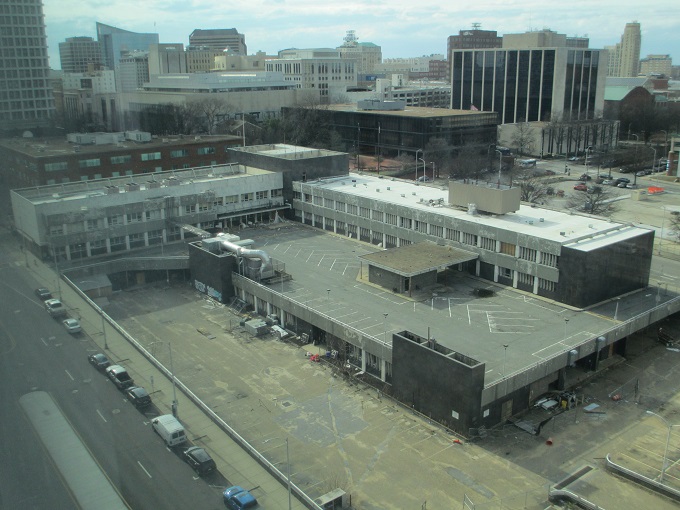
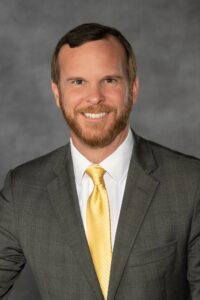
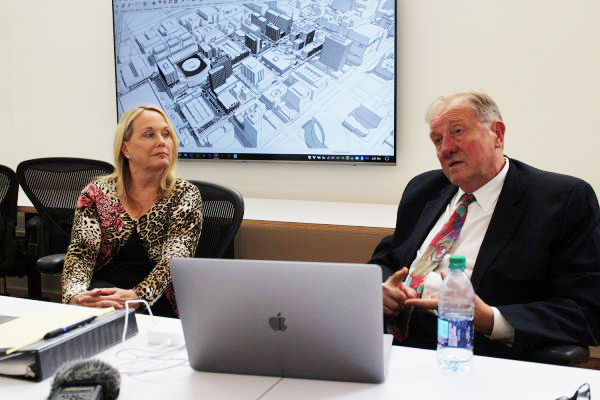
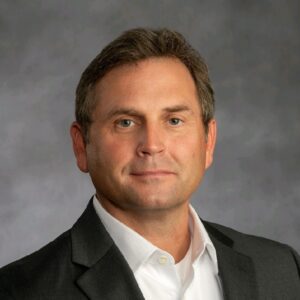
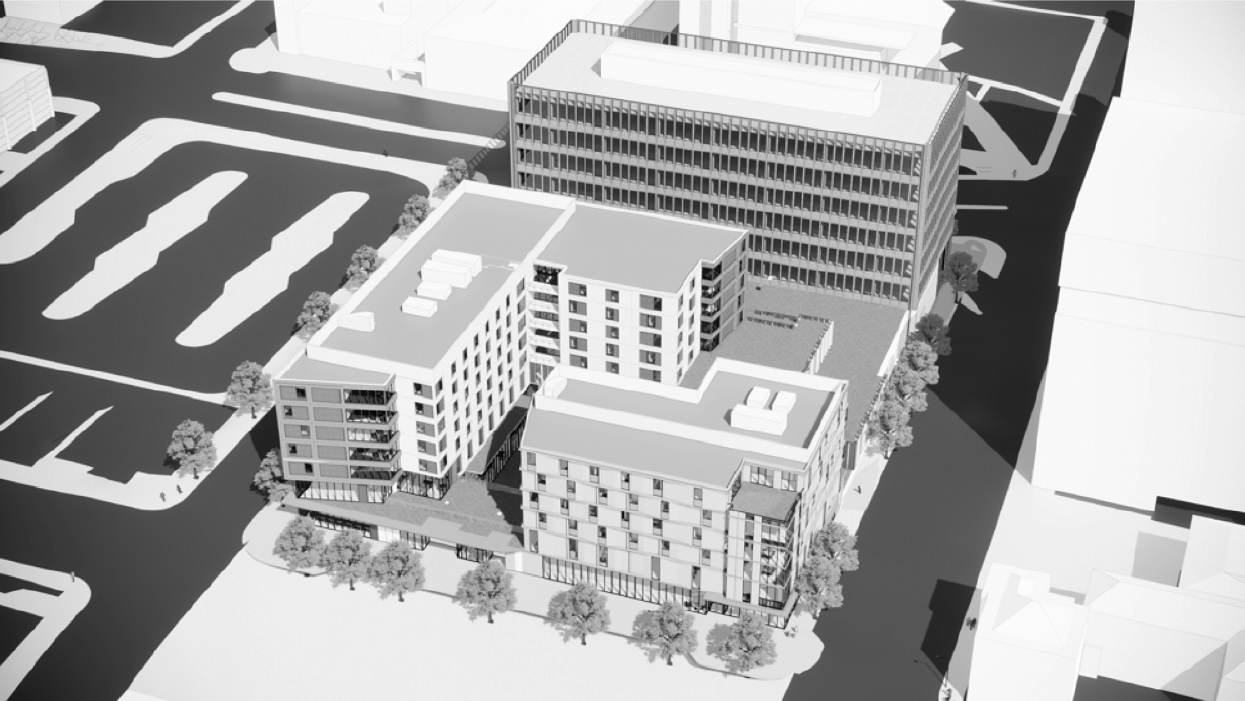
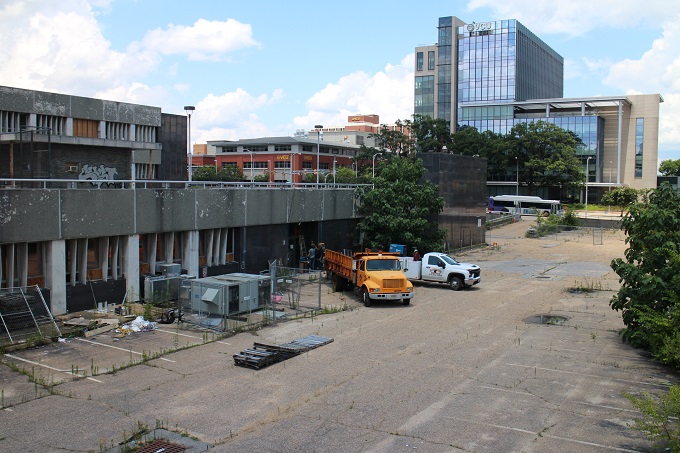


I’m glad you are still digging Jonathan. This negotiation gets more incredulous the deeper you get. Davis invokes Stoney in it without the Mayors knowledge, per the mayor. Kellerman, the sane voice of reason, per all appearance, “resigns”, leaving Rao and Davis to push the deal forward despite their real estate expert Jenkins warning them about the costs. The developer assigns the risk portion completely over to VCU and Oak Street. As crazy as that process was, look who still have jobs! Maybe Doug Wilder has a point.
What has the world come to? I’m agreeing with Doug Wilder!
This is outstanding reporting and a classic example of good, old-fashioned shoeleather investigative journalism. Jonathan absolutely deserves to be nominated for a VPA award for his exceptionally good work on this.
This is fantastic reporting/coverage. Seriously, should be put up for an award. Thank you for the effort.
Am I correct in stating that the only person that suffered any repercussions from this management team on this fiasco was Art Kellerman, the sole voice against this project (who was asked to resign)? This is killer reporting on a story that the RTD and other outlets are fine letting get swept under the rug.
Agree! This clearly shows that the RTD is a dead newspaper.
Banana Republic.
Bravo Jonathan.